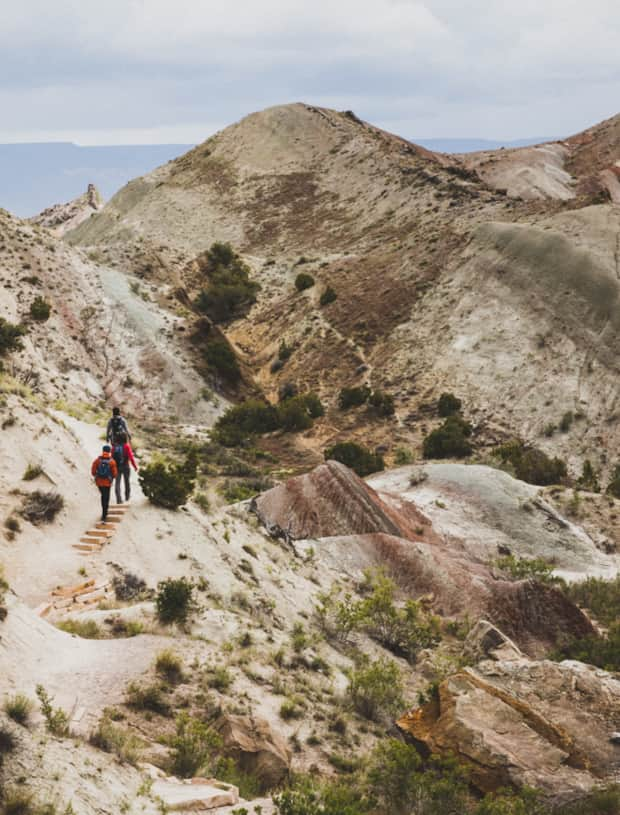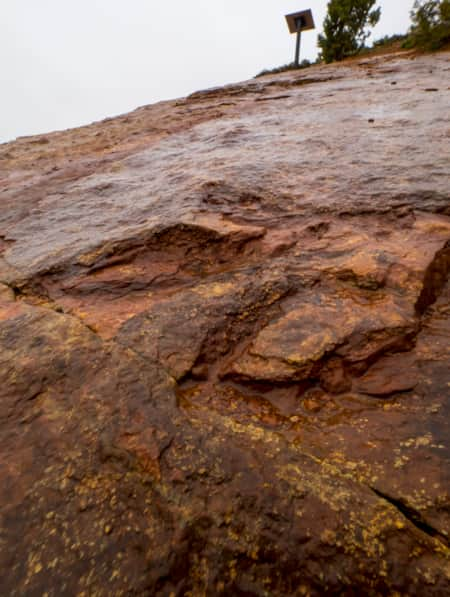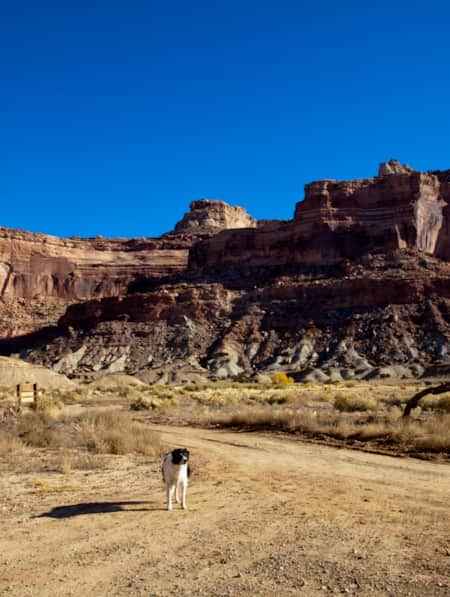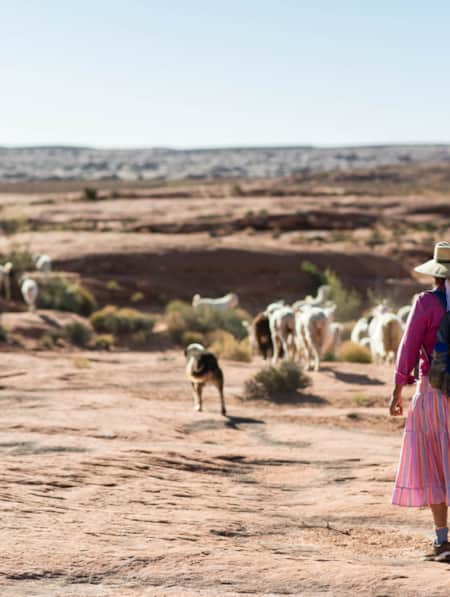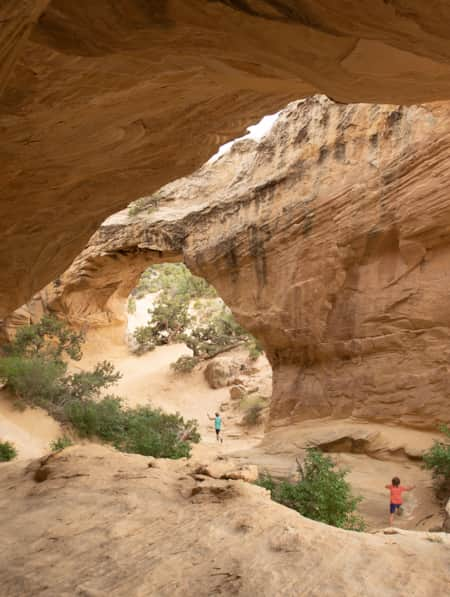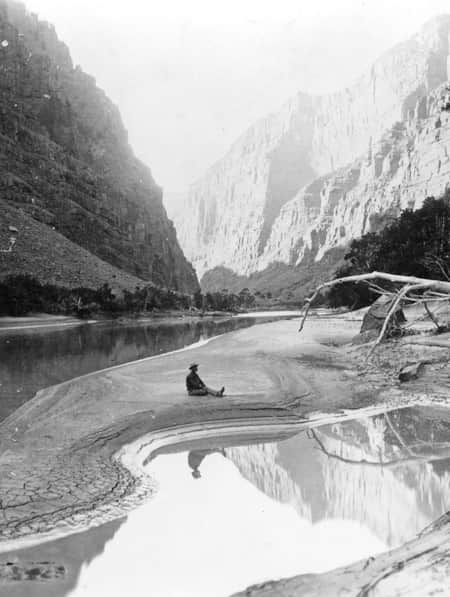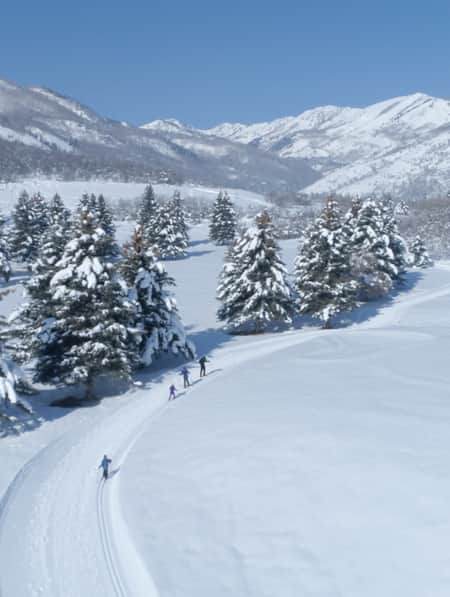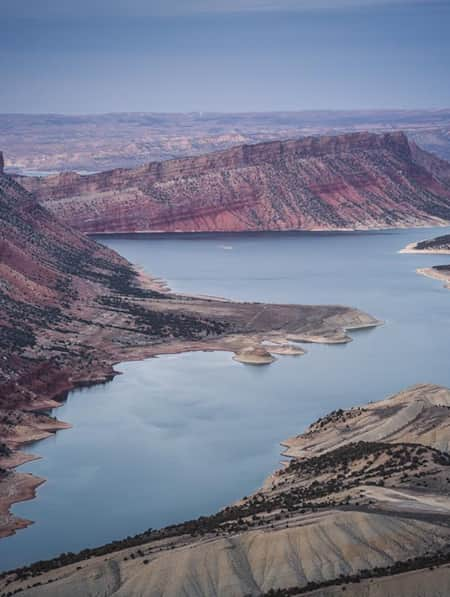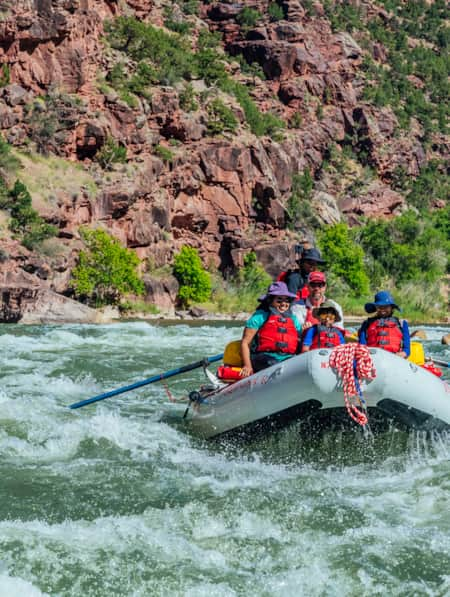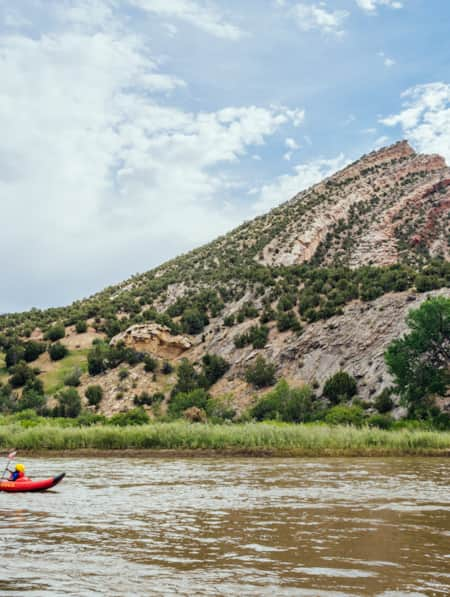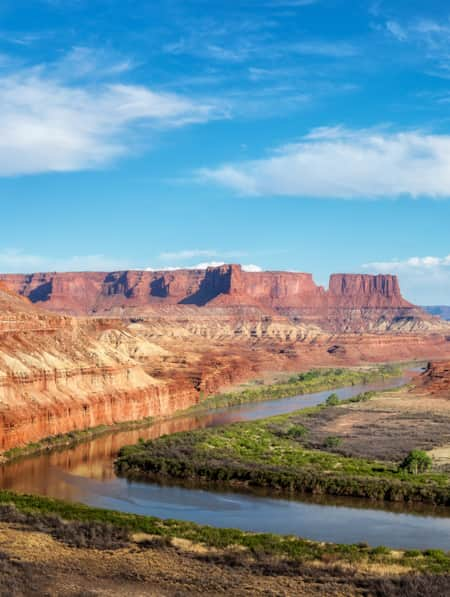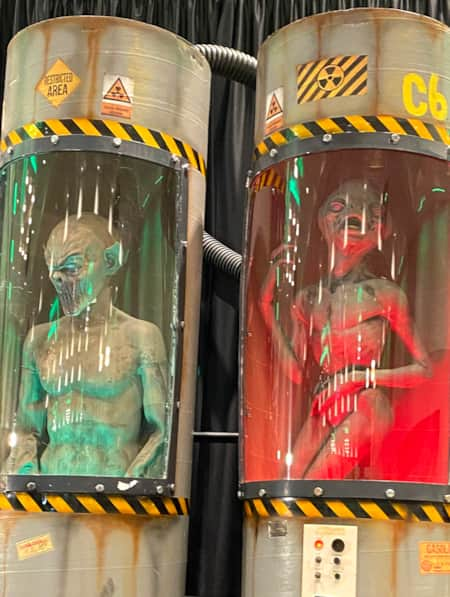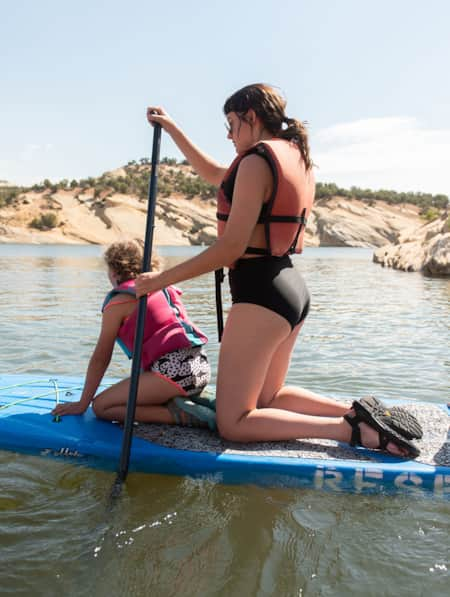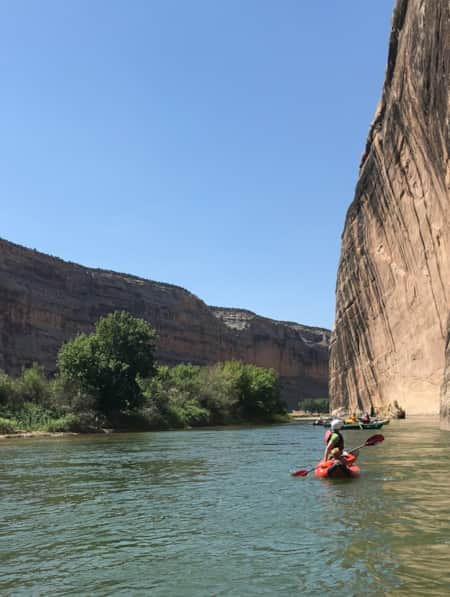The Real Story Behind the Dinosaur Quarry
When you first enter the monument's Quarry Exhibit Hall and look at the 1,500 displayed fossils, you can’t help but ask yourself: Did paleontologists really discover the bones like this or artfully place them here for effect? The answer is the bones are just as nature arranged them more than 150 million years ago, deposited by an ancient stream.
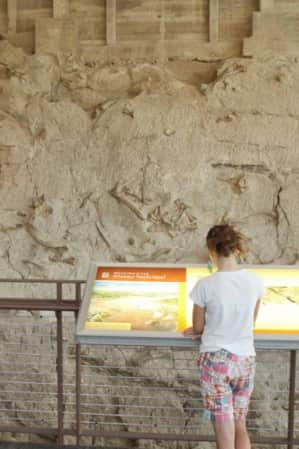
Close your eyes and imagine the existence of dinosaurs, tens of millions of years ago. First clear the scene in your mind of the buildings, the roads, the human constructions, then move rivers, plateaus, mountains and oceans into wild new landscapes, softening stone into clay and reanimating fossils into living bones. What stars burned brighter? What universal energy do you share with your terrestrial predecessors? At Dinosaur National Monument, you can touch 149-million-year-old fossils and feel for yourself.
When you first enter the monument's Quarry Exhibit Hall and look at the 1,500 displayed fossils, you can’t help but ask yourself: Did paleontologists really discover the bones as they are presented, or did someone artfully place them here for effect? The answer is that paleontologists discovered the bones just where you see them today. Everything in the quarry is real. The bones are just as nature arranged them more than 150 million years ago, deposited by an ancient stream.
The river coursed through a lowland area and sometimes dried up. Dinosaurs gathered around shrinking pools of water in the river bed and eventually died in place, to be entombed by sand and gravel when the river flowed once again. With more time, the river amassed large quantities of bones. Layers of mud and sand began covering the bones, eventually hardening into rock. Here they remained, waiting for the next cataclysmic event.
About sixty-five million years ago, that event began to occur. Forces beneath the earth’s crust began to exert themselves, forcing the crust upward, causing it to buckle and the riverbed containing the bones to tilt upward. Now near the surface, it was inevitable that erosion would eventually expose the bones and that one day someone would find them.
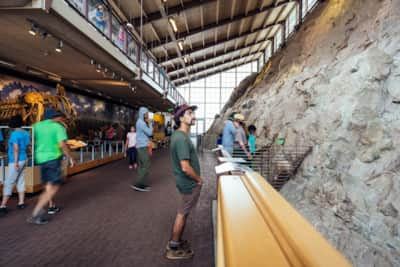
The National Park Service provides a wonderful explanation of the clues that led to these many revelations and to the incredible detective work scientists conducted. Associated with the dinosaur bones were a number of other fossils that told of a much different environment. By carefully chipping away at the surrounding stone, paleontologists found teeth, a bony back plate or scute, as well as a hip bone—all from an ancient type of crocodile. Because most crocodiles live along river systems, finding these fossils provided yet further evidence that a large river once cut through the area.
This is the evidence that awaited Earl Douglass back in 1909 and that awaited all subsequent paleontologists who excavated the mound until 1990. As these scientists examined this mass of evidence, they did what all paleontologists do: They dug it up, finding as they excavated enough bones to supply museums throughout America with amazing skeletal structures of creatures that many consider to have been some of the world’s most successful inhabitants.
The extent of the scientists’ findings were amazing. On a single hill, they found the remains of flesh-eating dinosaurs. They found both huge and small dinosaurs. They found Camptosaurus and Dryosaurus, dinosaurs that walked and ran on their hind legs and that had both teeth and horny beaks. Here, too, they found a species known as Stegosaurus, which had a double row of plates down its back, four spikes on the end of its tail, and a small beaked skull. The quarry also contained Allosaurus and Ceratosaurus, ferocious predators who walked on their hind legs. They had strong claws and gaping mouths filled with recurved serrated teeth.
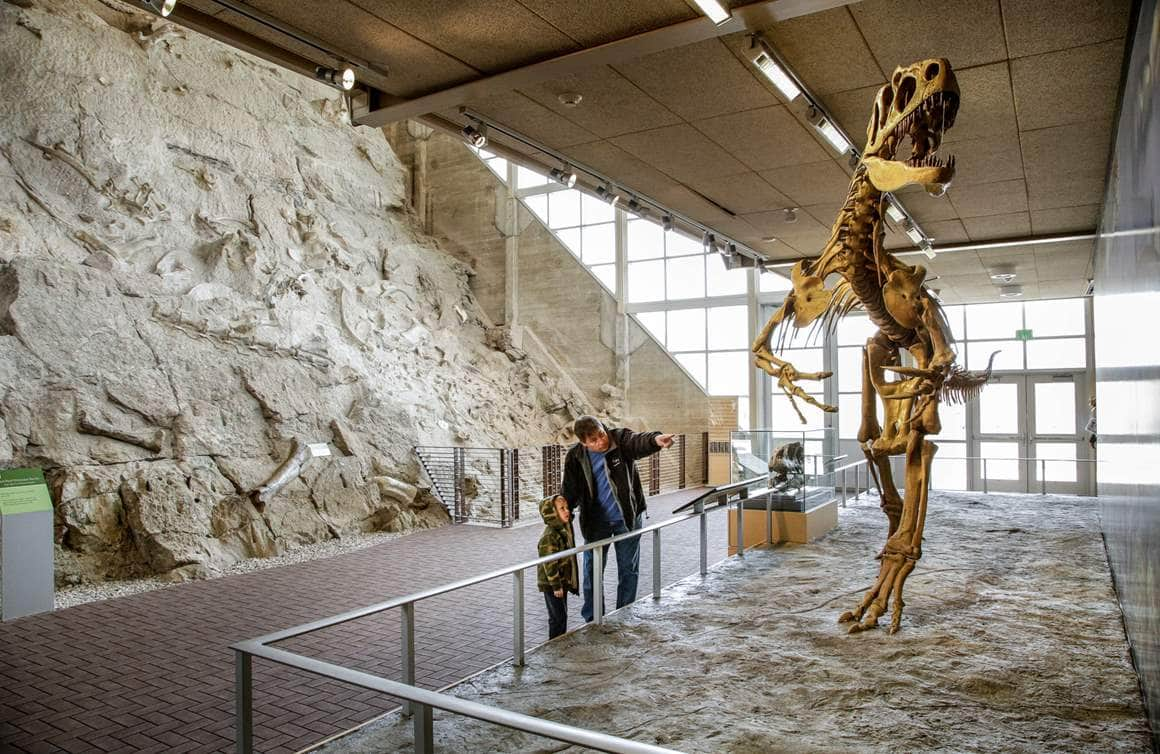
Quarry Exhibit Hall

Dinosaur National Monument

Dinosaur National Monument
Insofar as dinosaurs are concerned, the quarry not only preserves bones as yet unearthed but also provides answers to many fascinating questions that began to emerge when dinosaurs were first discovered. Where, for instance, did all the dinosaurs go? How could such a huge, dominant animal disappear so completely from the face of the earth? Why aren’t there any survivors?
Paleontologists offer many theories regarding the demise of dinosaurs. Perhaps early mammals ate too many dinosaur eggs. Perhaps an asteroid crashed into the earth and darkened the skies for months or years with the dust of its explosion. Perhaps there was a change in the earth’s climate that was so sudden dinosaurs could not adapt.
Paleontologists offer yet another theory. Some say that perhaps all dinosaurs weren’t wiped from the face of the earth and that one remains, though in a much-evolved form. That group is one of our most cherished groups, the order of Aves — the birds. How is this possible? Many ornithologists say that scales may have been the predecessors of feathers.
Is there, then, a creature that provided the link between dinosaurs and Aves? Paleontologists believe Archaeopteryx, which existed during the Jurassic period, may be that link. Though called a bird, its body was just like that of a small meat-eating dinosaur.
Because none of the theories satisfy all resulting questions, the extinction of dinosaurs remains one of the world’s great mysteries.
Learn more about Dinosaur National Monument and begin planning your trip to this beautiful corner of Utah.
